
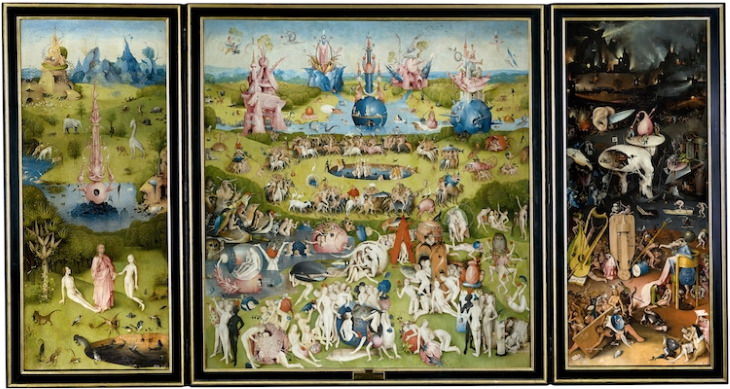

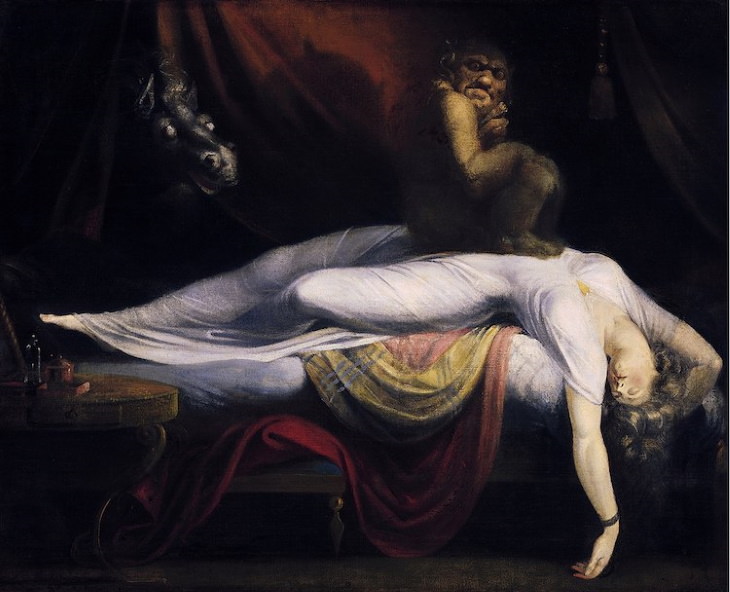
Humans have been trying to explain the meaning and causes of dreams, especially the scary ones, for millennia. One such explanation from European folklore were demonic creatures called the incubus (male) and the succubus (female), which according to mythology and legends, lie on a dreamer's chest, causing nightmares, harming their mental and physical health, or even causing death.
This famous art piece by the Swiss painter titled The Nightmare is an illustration of the legend about the incubus, whom we can see perched upon a woman's chest as she is asleep. To explain the dark horse figure on the left: it likely refers to German folktales, where women who slept alone would be visited or even possessed by demons, and men were visited by ghosts of horses. In the painting, Fuseli unites all the above-mentioned legends of creepy spirits and demons in one painting, creating an all-encompassing manifestation of a nightmare.
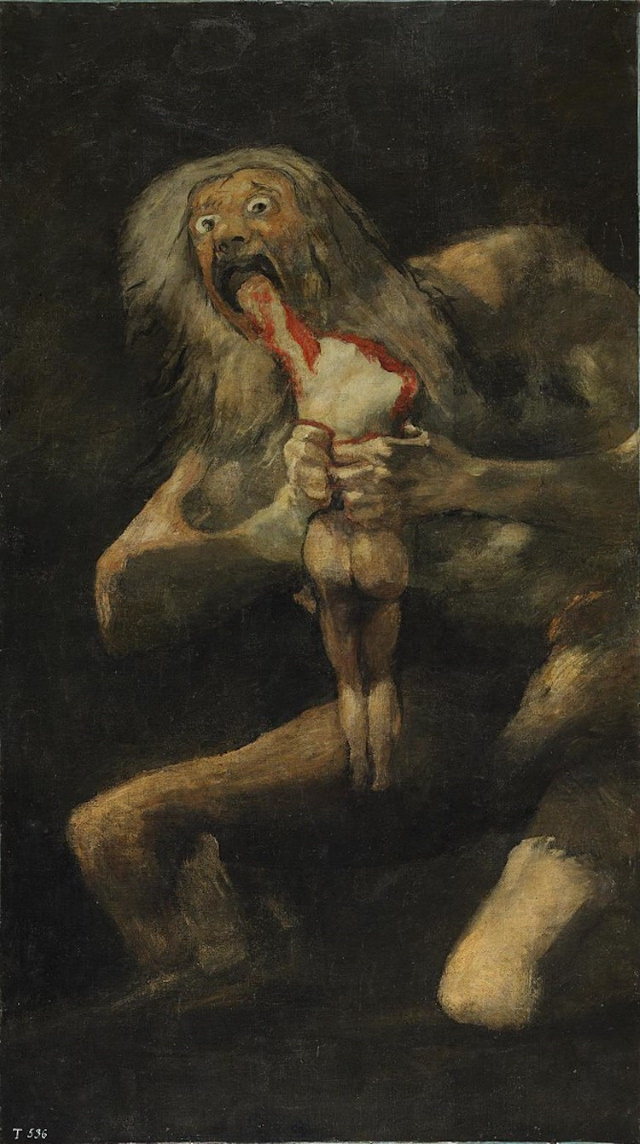
Today, Goya is probably most recognized for the last paintings he created, a series of 14 haunting artworks known as the Black Paintings. During this time, Goya no longer got commissions, and so he secluded himself in a farmhouse known as "La Quinta del Sordo" (The House of the Deaf Man) near Madrid and let his creativity run free. Nearly completely deaf and mentally drained, Goya created the Black Paintings between 1819 and 1823.
The most famous and also the most terrifying of these works is Saturn Devouring His Son, inspired by Roman mythology. Goya didn't intend any of the Black Paintings to be displayed publicly. Instead, they would serve as the decoration for his home, with this specific painting being intended for the dining room.
The painting depicts the chief Titan Saturn eating his own offspring in an attempt to prevent the prophecy that one of his children would overthrow and kill him. Spoiler alert: Gaia, his wife secretly hides one of her children, Zeus, who then overthrows Saturn, saves some of his siblings, and fulfills the prophecy.
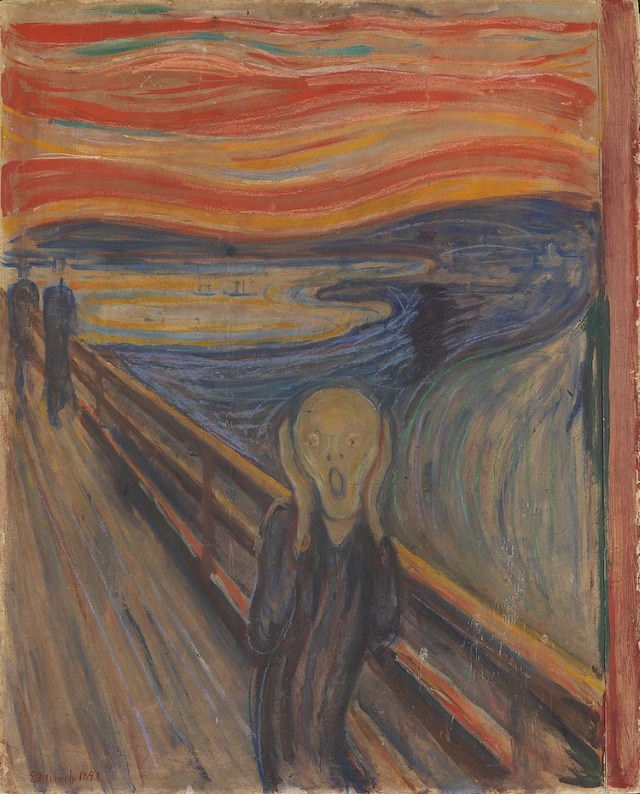
Though this series of 4 paintings by the famous Norwegian expressionist is not everyone's cup of tea, one thing can't be taken away from it: it definitely captures a mood. In addition, it's one of the most important and recognized paintings in the world, and we'd also say that it's one of the most disconcerting ones. The painting depicts a vague, almost mummy-like figure captured in a moment of terror with an ominous red sunset in the background.
What most people don't realize that this ominous sunset was the inspiration of the painting, and it's a sunset the artist himself has experienced in real life. As the artist writes in his journal, “One evening I was walking along a path, the city was on one side and the fjord below. I felt tired and ill. I stopped and looked out over the fjord—the sun was setting, and the clouds turning blood red. I sensed a scream passing through nature; it seemed to me that I heard the scream. I painted this picture, painted the clouds as actual blood. The color shrieked. This became The Scream.”
Art critics now believe that the artist didn't exaggerate in his description of this sunset, as what he and many others at the time had witnessed was the aftermath of the devastating Krakatoa volcano eruption in 1883, which tinted the skies red for months.
Get to know this famous masterpiece better in the previous article we wrote titled 12 Fascinating Facts About 'The Scream'.
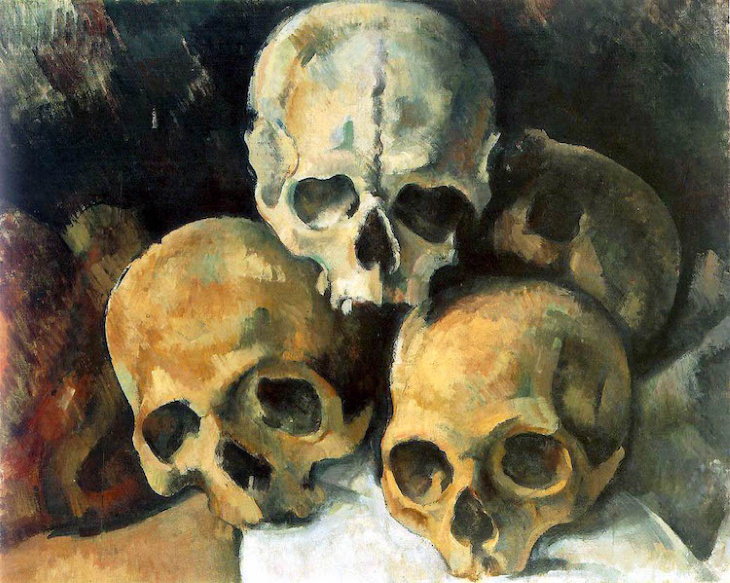
Paul Cézanne is more well-known for his dynamic and cheerful impressionistic landscapes and depictions of ordinary folk engaging in their everyday activities. The majority of the painter's still-lifes likewise typically show less gruesome subjects, such as apples, pears, and oranges. However, it is known that Cézanne also displayed an increased interest in death as he approached old age, and it can be said that the Pyramid of Skulls is the peak of these existential ruminations.
Displaying nothing but a stack of four human skulls, the painting forces the viewer to meet face to face with their own mortality. In fact, the inclusion of skulls and bones in fine art is nothing new, it even has its own definition - memento mori. This Latin phrase is translated to “remember that you have to die”, and for centuries, artists have included human skulls as a symbol of mortality and the unavoidability of death. However, unlike his predecessors, who typically featured a skull as part of an artwork's background, Cézanne decided to bring the skulls (and thus also the question of mortality) to the foreground and make it the center of attention, completely unobscured and painfully apparent. That's why this artwork is the creepiest one if you ask me...
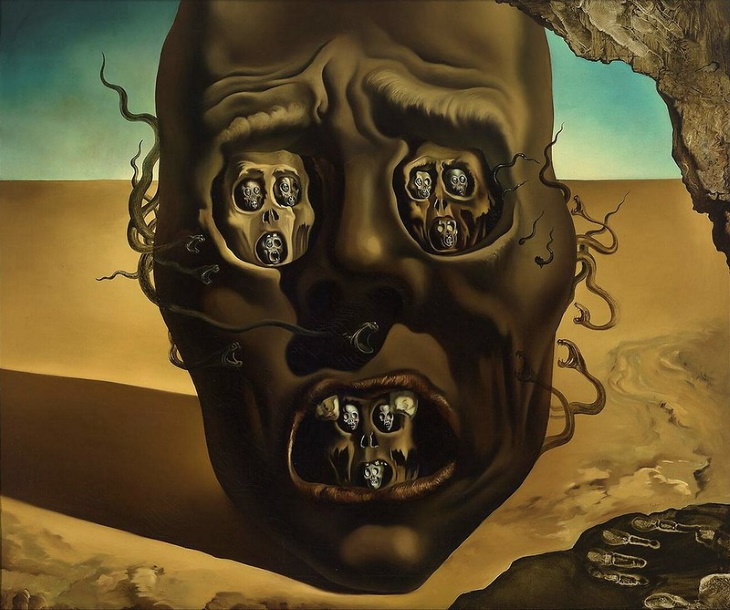
If Hieronymus Bosch used surrealism as a feature to prove a specific moral idea, Salvador Dali famously turned this dream-like depiction into an entire artistic style, as we can see throughout the vast majority of his Most Famous Artworks. However, melting clocks, burning giraffes, and lobster phones, which primarily exist to boggle our minds and entertain, are not the only art characteristic of Dali's style.
One of the most meaningful and certainly the most stirring of his paintings is The Face of War, which Dali created in 1940 after he and his wife Gala fled to California during the onset of World War II. The trauma of war and the mass suffering the artist had witnessed all served as inspiration for this work. In fact, Dali once stated that his entire artistic vision was a premonition of an impending war, but it is still this specific piece that expresses the terror of war most directly.